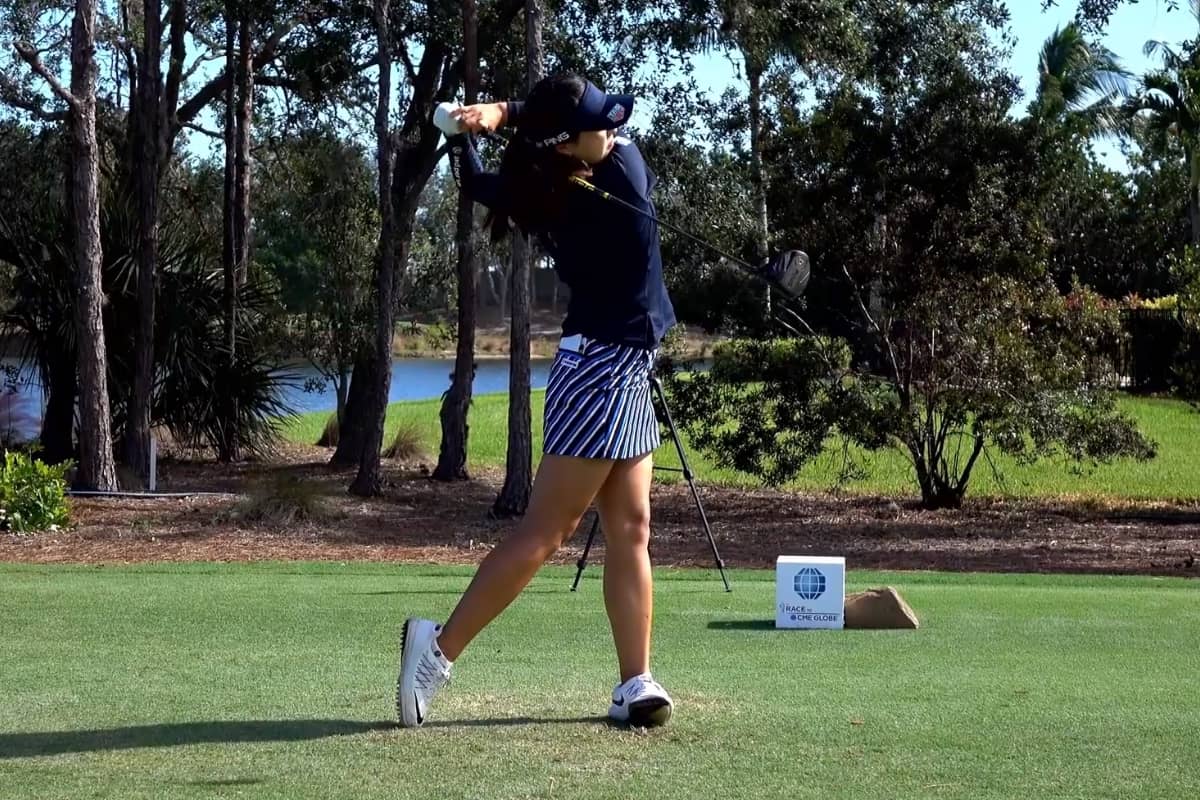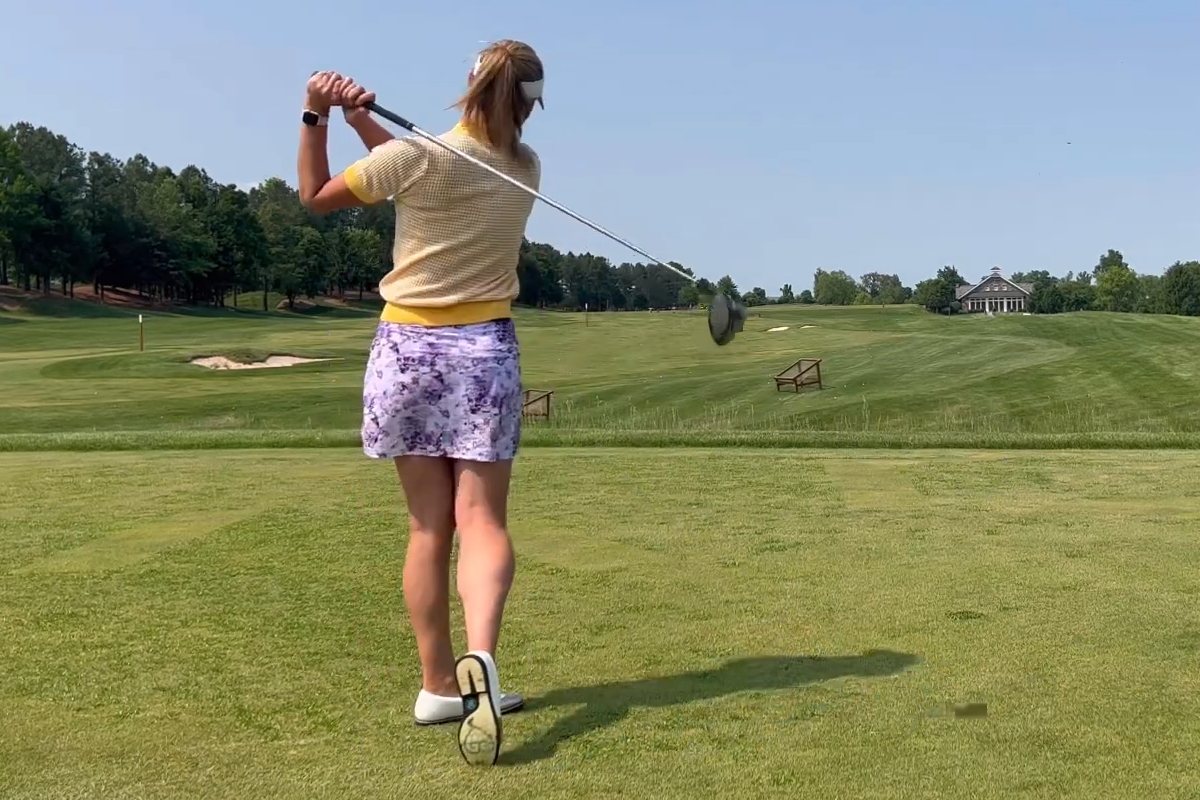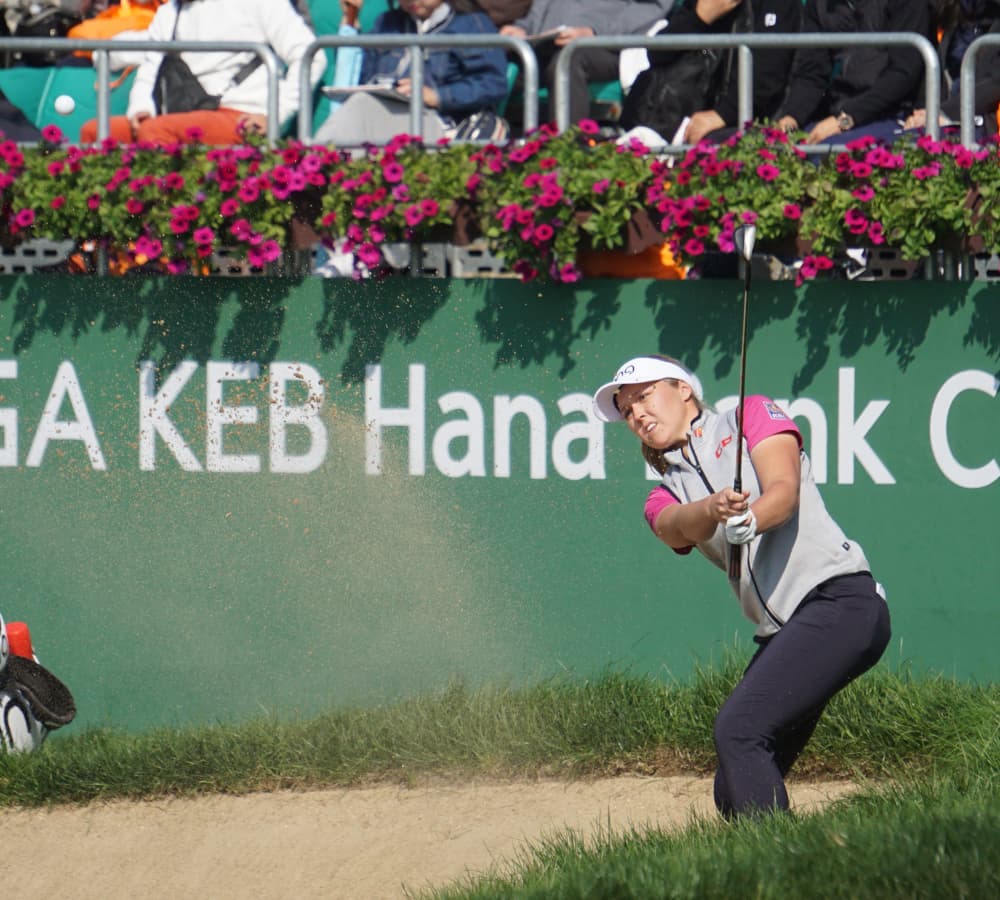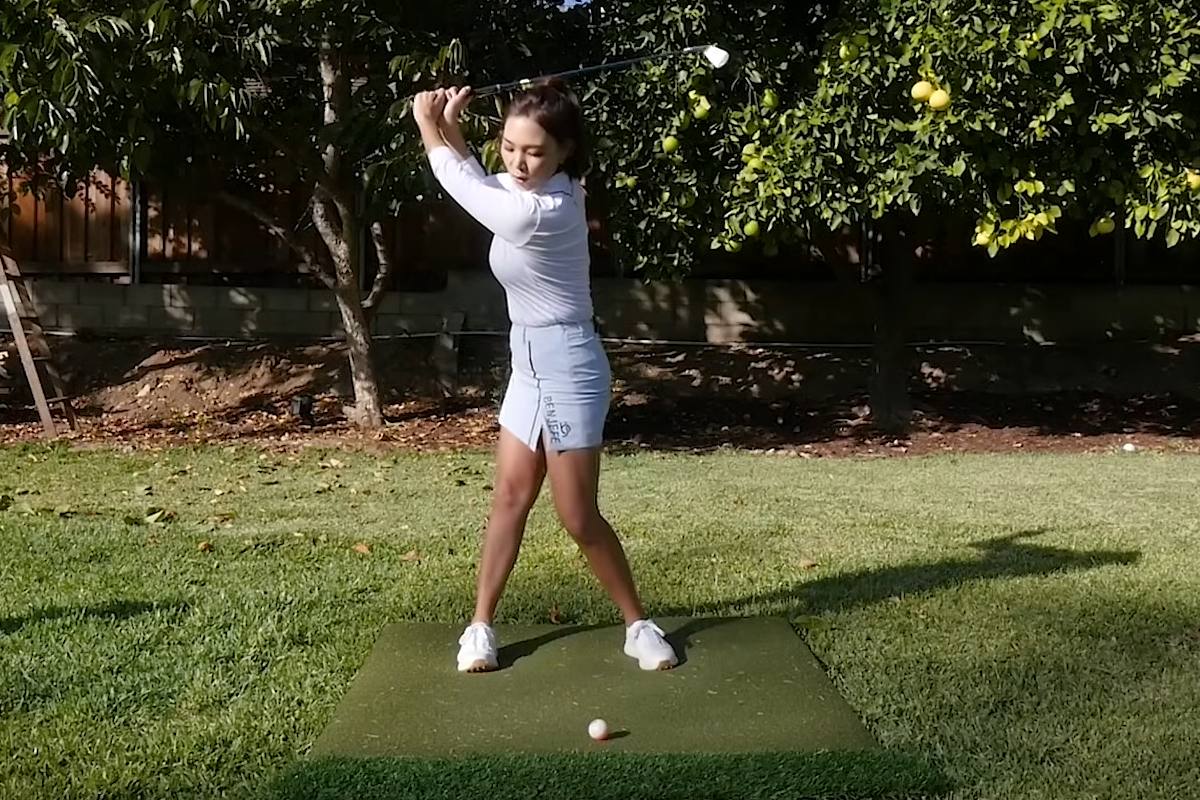Pete Kelbel’s expert swing analysis of South Korean In Gee Chun, winner of the 2015 U.S. Women’s Open and the 2016 Evian Championship. See Pete’s full series of video analysis of leading LPGA players here.
How to Swing Like In Gee Chun
Ingee has a very great swing to model for mastering swing fundamentals. She is so sound at creating load, torque and stored lag. Then she’s great at making a noticeable, clear lateral rotational move as she attacks the ball!
Here is In Gee’s video courtesy of GolfSwingHD. Move the little bar to the time frame point below on her video (m:ss) to match my comments.

Set Up – 0:07
Ingee has a great driver set up to launch this ball slightly on the upswing. Note her slight spine tilt to her right, away from the target. Her right shoulder is slightly lower than her left. The end of the grip is centered and pointing at her belt buckle. The ball is forward of the middle of her stance. All of these are set up characteristics to launch her driver with a slight upswing at impact! Otw the distance from her left lead hip to the camera tripod.
Takeaway – 0:17
The shaft is on its way up, just above the point where it was parallel to the ground. Note how her back has started to turn. Her arms are extended and in front of her chest as she rotates back. Her left knee has bent slightly behind the ball as she first begins to load up the right side.
The Letter ‘L’ – 0:19
Note that her left arm is now just above being parallel with the ground. Her wrists have cocked the club head up, making a Letter L with her left arm. Her right leg remains braced as it accepts more weight, creating torque. Zero sway as she loads up the right side.
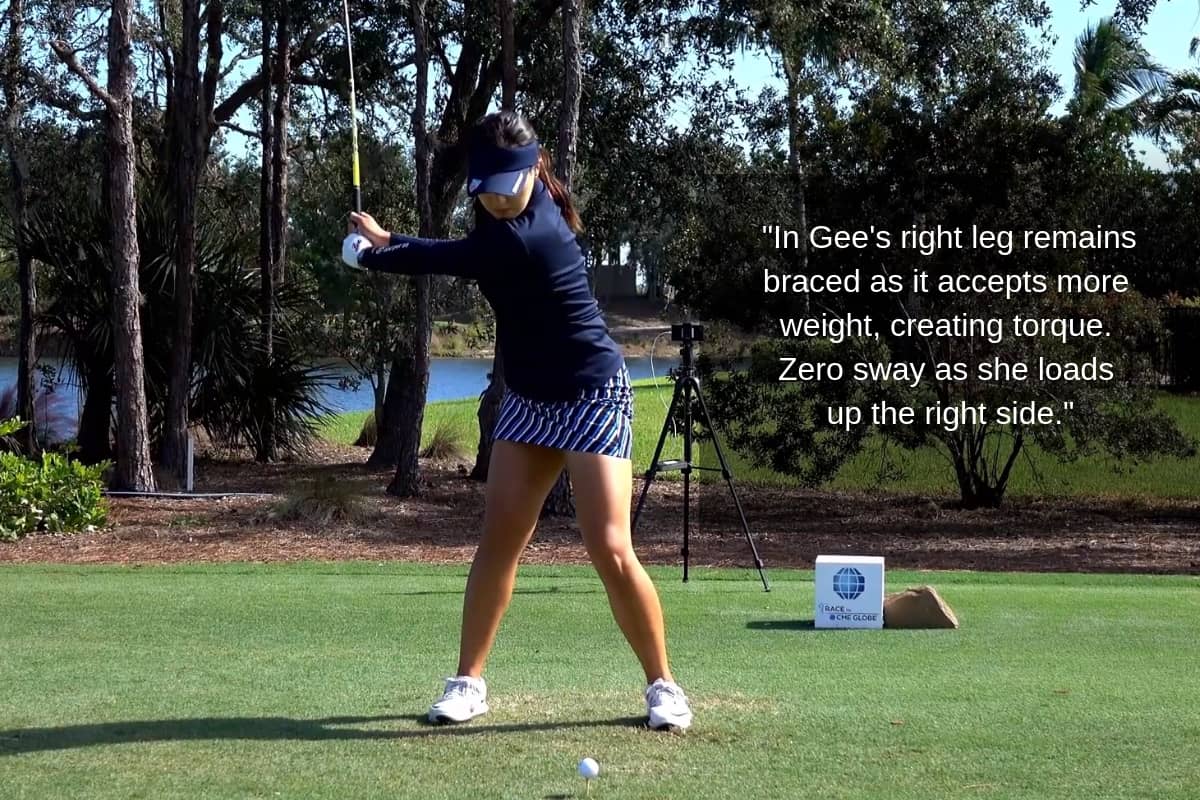
Top of the Swing – 0:24
At the top of the swing, her back faces the target in a 90-degree turn. Her right leg remains braced, resisting the big turn of the back. She is now fully loaded and full of torque with the majority of her weight on her right side. She didn’t move the right knee or hip at all to the right. Note the distance between her left lead hip and the camera tripod.
Downswing Sequence – 0:26
In Gee Chun has a terrific sequence (the order of movements on the downswing). See how her left hip makes a lateral (forward) move toward the camera tripod. The club shaft waits for that hip move. Note how the shaft is still pointing at the target! This discipline is a major part of creating a powerful stored up lag wrist and shaft angle.
Lag Alert – 0:27
A great position to check for this stored up lag angle of the wrist and shaft. Her left arm is now parallel to the ground and the club shaft is pointing to 1:00 or 2:00. That is a sign of powerful stored lag. (The clubs shaft would point straight up, or to 10:00 or 11:00 if the wrists unhinged too early.). Note how her head does an excellent job of staying behind the ball (and the tree trunk in the background.)
Just after impact – 0:29
The left hip moves even more forward and on its way around rotationally. In Gee’s head is holding behind the ball for its last megasecond. Her arms are extended and still in front of her chest. Her right shoulder is down and her left shoulder is up, showing that she just attacked on the slight upswing!
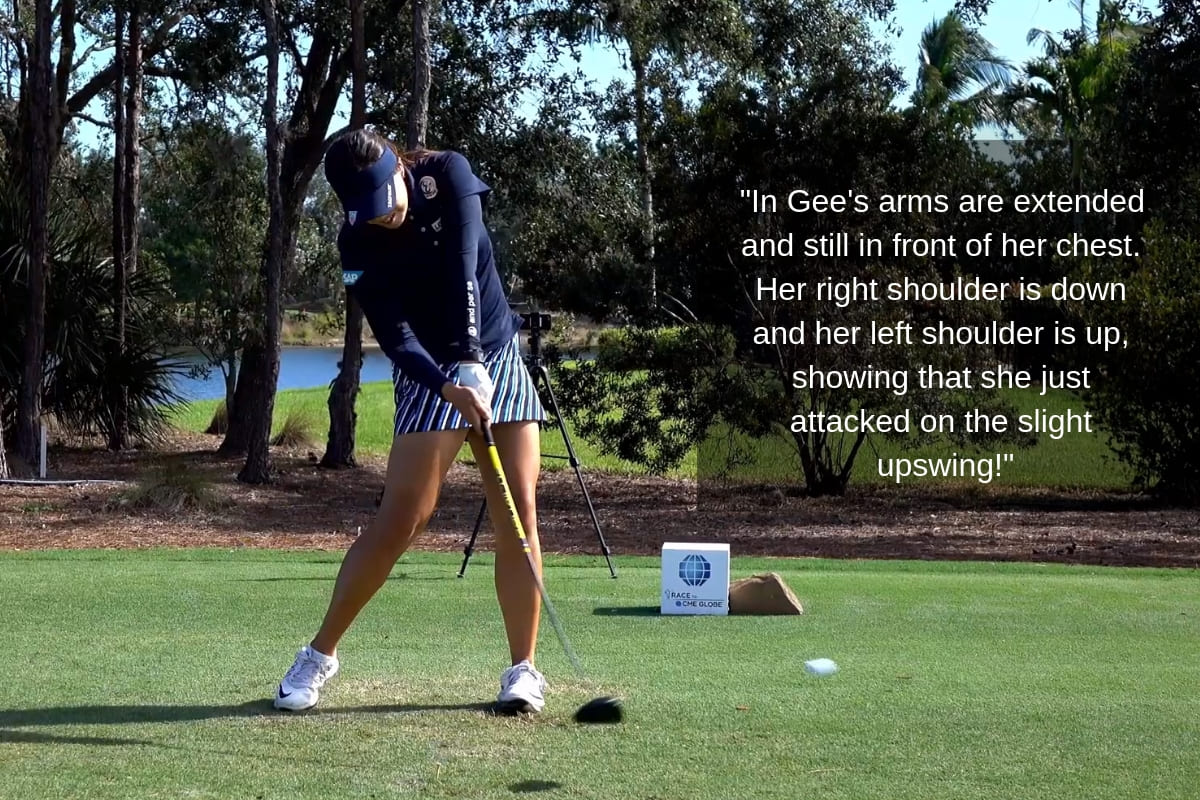
At the finish – 0:40 (cover photo top of page)
Note how she has mostly covered up the camera. This is proof that great players make a forward/rotational move with their lead hip. Her right pocket is now facing where the ball was, proving that she rotated her hips as well! The club is properly released behind her pointing from 11:00 at the grip end to 4:00 on the club head end. Ingee now faces the target in a balanced position and on the toes of her back foot, showing a complete weight transfer! her head is now released and on the target side of that tree trunk, watching her ball down the middle of the fairway!
Don’t keep your head down after impact!
Great players swings, like Ingee’s, can be a lot of fun to learn from. Take some time to stop the video at 5 or 6 key checkpoints, using objects like the tree trunk and camera tripod to learn the movements of an impressive, powerful, US Open winning swing!
Pete

